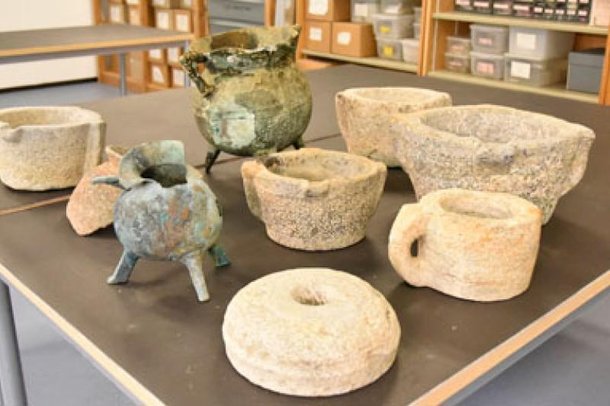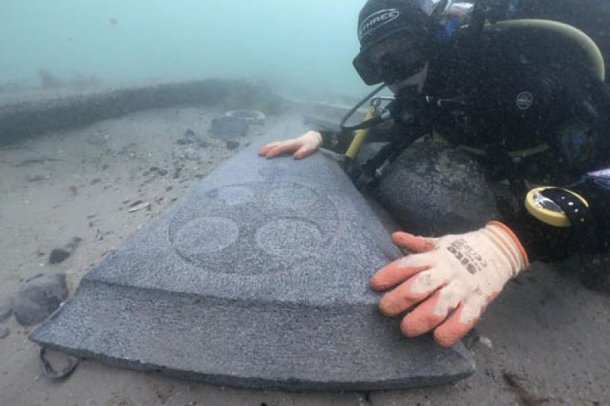Embarcações naufragadas dificilmente conseguem resistir por séculos no fundo do mar. De modo geral, navios feitos com madeira costumam ter sua estrutura completamente destruída ao longo de poucos séculos. Isso fez com que uma embarcação do século XIII relativamente bem preservada, chamasse a atenção de pesquisadores da Universidade de Bournemouth, no Reino Unido.
Uma equipe liderada pelo capitão do barco de mergulho Trevor Small descobriu o naufrágio em 2019, e Tom Cousins, oficial de mergulho e arqueologia marítima da Universidade de Bournemouth, ou a liderar uma série de mergulhos recentemente para tentar descobrir mais detalhes sobre a embarcação.
Lápides, cerâmicas, copos e vasos

Batizado de Mortar Wreck, o navio de carga foi encontrado perto do porto de Poole, no sul da Inglaterra. Ele está com os restos do casco ainda visíveis, o que é bastante raro para algo no fundo do mar há tanto tempo. Por esse motivo, o governo britânico concedeu ao naufrágio o mais alto nível de proteção oficial.
Até o momento, já foram encontrados diversos itens como potes, cerâmicas, copos, vasos e outros objetos de cozinha. Também foram descobertas duas lápides de pedra gótica e mármore bruto da Ilha de Purbeck. O que mais chama a atenção é o estado de conservação do material, que resistiu praticamente intacto por mais de sete séculos.
Os primeiros estudos feitos a partir das madeiras expostas do casco, indicam que ele foi feito de carvalho irlandês. A datação sugere que as árvores foram derrubadas entre 1242 e 1265, durante o reinado de Henrique III. A análise inicial também mostrou que o navio provavelmente tinha cerca de 20 metros de comprimento.
O Mortar Wreck provavelmente estava transportando sua carga de pedra para cidades e estabelecimentos religiosos mais ao leste da Inglaterra. As causas do naufrágio ainda são desconhecidas, mas é provável que a carga pesada tenha contribuído para isso durante uma tempestade.
O segredo da preservação

É raro que a madeira submersa sobreviva por muito tempo e chamou a atenção da equipe que estudo o navio. Aparentemente, o estado de preservação do naufrágio se deve à areia macia no fundo da Baía de Poole, que cobriu o casco logo após o naufrágio.
Porém, agora que as areias descobriram várias partes do casco, a madeira pode começar a se deteriorar rapidamente. Para evitar que isso aconteça, os mergulhadores estão “ensacando” as partes expostas do casco. Isso é feito cobrindo a madeira com sacos de areia para que a areia do fundo do mar se acumule sobre o casco novamente e proteja os destroços até que os arqueólogos possam retornar ao local para uma escavação completa.
Apesar de ser o mais antigo, o Mortar Wreck não é o único naufrágio a receber a proteção do governo britânico. Outras duas embarcações também foram encontradas no sul da Inglaterra. Um deles pode ter estado envolvido na Batalha de Portland em 1653 — um combate naval durante a Primeira Guerra Anglo-Holandesa. Já o segundo deve se tratar dos restos de um navio mercante do mesmo período.
Fonte: MegaCurioso.